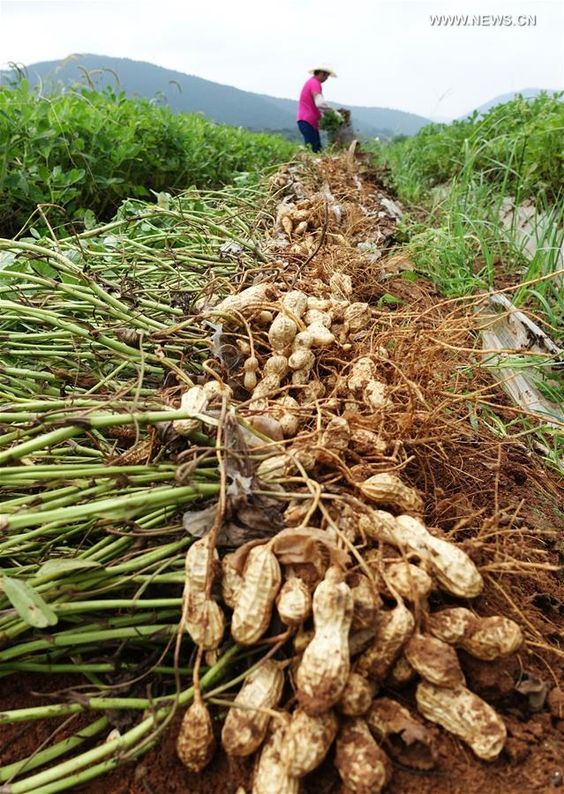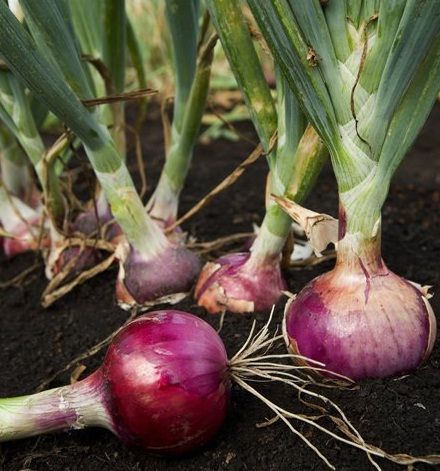Peanut Cultivation in Indonesia: Embracing Smart Agriculture for a Sustainable Future
Peanut Cultivation in Indonesia, with its rich and diverse agricultural heritage, has long been a major player in global agriculture. Peanut cultivation is one of the key components of this sector, contributing significantly to both the economy and food security. However, traditional farming practices have often led to challenges such as low productivity, pest infestations, and inefficient resource utilization. The advent of smart agriculture offers promising solutions to these issues, bringing innovation and sustainability to the forefront of peanut cultivation. This article explores the integration of smart agriculture in peanut cultivation in Indonesia, highlighting its benefits, objectives, and advantages.
Peanut Cultivation in Indonesia, scientifically known as Arachis hypogaea, are a staple crop in Indonesia. They are cultivated across various regions, with significant production in Java, Sumatra, and Sulawesi. The country’s warm climate and fertile soil provide ideal conditions for peanut farming. Traditionally, peanut cultivation involves manual labor, basic irrigation techniques, and limited use of modern technology.
Contents
- 1 Challenges in Traditional Peanut Cultivation in Indonesia Farming
- 2 Implementing Smart Agriculture in Peanut Cultivation in Indonesia
- 3 Benefits of Smart Agriculture Peanut Cultivation in Indonesia
- 4 Objectives of Smart Agriculture Peanut Cultivation in Indonesia
- 5 Advantages of Smart Agriculture Peanut Cultivation in Indonesia
- 6 Environmental and Economic Impact Peanut Cultivation in Indonesia
Challenges in Traditional Peanut Cultivation in Indonesia Farming
Despite its potential, traditional peanut farming in Indonesia faces several challenges:
- Pest and Disease Management: Farmers often struggle with pests such as aphids and diseases like leaf spot, which can severely impact yields.
- Inefficient Resource Use: Water and fertilizer application methods are often inefficient, leading to wastage and environmental degradation.
- Labor-Intensive Practices: Manual planting, weeding, and harvesting require significant labor, increasing production costs.
- Climate Variability: Unpredictable weather patterns due to climate change affect crop growth and productivity.
Introduction Smart agriculture, also known as precision farming, involves the use of modern technologies to enhance crop production and farm management. It leverages tools such as Internet of Things (IoT) devices, sensors, drones, data analytics, and machine learning to optimize farming practices. In the context of peanut cultivation, smart agriculture can transform traditional methods, making them more efficient, sustainable, and productive.
Implementing Smart Agriculture in Peanut Cultivation in Indonesia
a. IoT and Sensors: IoT devices and sensors play a crucial role in smart agriculture. In peanut cultivation, soil moisture sensors can monitor the water levels in the soil, ensuring precise irrigation. Temperature and humidity sensors help in creating optimal growing conditions, while pest and disease sensors enable early detection and intervention.
b. Drones and Satellite Imagery: Drones equipped with multispectral cameras can capture detailed images of peanut fields. These images help in monitoring plant health, identifying stress areas, and assessing crop maturity. Satellite imagery provides a broader perspective, allowing farmers to analyze large-scale field conditions and make informed decisions.
c. Data Analytics and Machine Learning: Data collected from sensors and drones can be analyzed using advanced analytics and machine learning algorithms. These technologies help in predicting pest outbreaks, optimizing fertilizer usage, and improving yield predictions. For example, machine learning models can analyze historical weather data to forecast future climatic conditions and their impact on peanut crops.
d. Automated Machinery: Automation reduces the labor-intensive nature of peanut farming. Automated planting and harvesting machines increase efficiency and reduce the dependency on manual labor. These machines are equipped with precision planting technology, ensuring optimal seed placement and spacing.
Benefits of Smart Agriculture Peanut Cultivation in Indonesia
a. Increased Productivity: Smart agriculture technologies enhance crop yields by providing precise inputs such as water, fertilizers, and pesticides. This leads to healthier plants and higher productivity.
b. Resource Efficiency: By using sensors and data analytics, farmers can optimize resource use, reducing wastage of water, fertilizers, and pesticides. This not only lowers production costs but also minimizes environmental impact.
c. Pest and Disease Management: Early detection of pests and diseases through sensors and predictive analytics allows for timely intervention. This reduces crop losses and the need for extensive pesticide application.
d. Climate Resilience: Smart agriculture helps farmers adapt to climate variability by providing real-time data and weather forecasts. This enables better planning and reduces the risk of crop failure due to adverse weather conditions.
Objectives of Smart Agriculture Peanut Cultivation in Indonesia
a. Enhancing Food Security: By increasing peanut yields and ensuring consistent production, smart agriculture contributes to food security in Indonesia. Peanuts are a valuable source of protein and essential nutrients, making them crucial for the country’s nutritional needs.
b. Sustainable Farming Practices: Smart agriculture promotes sustainable farming by optimizing resource use and reducing environmental impact. It encourages the adoption of eco-friendly practices and minimizes the carbon footprint of agriculture.
c. Economic Growth: Improved productivity and efficiency in peanut farming translate to higher incomes for farmers. This contributes to the overall economic growth of rural communities and the agricultural sector.
d. Innovation and Knowledge Transfer: The integration of smart agriculture fosters innovation and encourages knowledge transfer among farmers. It creates opportunities for training and capacity building, empowering farmers with modern skills and techniques.
Advantages of Smart Agriculture Peanut Cultivation in Indonesia
a. Real-Time Monitoring and Decision-Making: Smart agriculture provides real-time data on various aspects of peanut cultivation, enabling informed decision-making. Farmers can monitor soil conditions, crop health, and weather patterns, making timely interventions as needed.
b. Cost Reduction: By optimizing resource use and reducing labor requirements, smart agriculture significantly lowers production costs. This increases the profitability of peanut farming.
c. Improved Crop Quality: Precision farming techniques ensure that peanuts receive the right amount of nutrients and water, resulting in higher quality crops. This enhances marketability and consumer satisfaction.
d. Adaptability to Changing Conditions: Smart agriculture technologies are adaptable to different environmental conditions and can be customized to suit specific farm needs. This flexibility is crucial for addressing the diverse challenges faced by peanut farmers in Indonesia.
Environmental and Economic Impact Peanut Cultivation in Indonesia
a. Environmental Sustainability:
Smart agriculture promotes sustainable farming practices by reducing the overuse of resources. Precision irrigation and targeted fertilization minimize water and nutrient runoff, protecting soil and water quality. Reduced pesticide use and improved pest management contribute to biodiversity and ecosystem health.
b. Economic Benefits:
Increased productivity and efficiency in peanut farming lead to higher incomes for farmers. Reduced input costs and improved crop quality enhance profitability. The growth of the smart agriculture sector also creates job opportunities in technology development, training, and support services.
Peanut Cultivation in Indonesia,The adoption of smart agriculture in peanut cultivation in Indonesia represents a transformative step towards a more sustainable and productive agricultural sector. By leveraging modern technologies, farmers can overcome traditional challenges, optimize resource use, and enhance crop yields. The benefits of smart agriculture extend beyond individual farms, contributing to food security, economic growth, and environmental sustainability. As technology continues to advance, the future of peanut farming in Indonesia looks promising, offering a path to a resilient and prosperous agricultural landscape.




